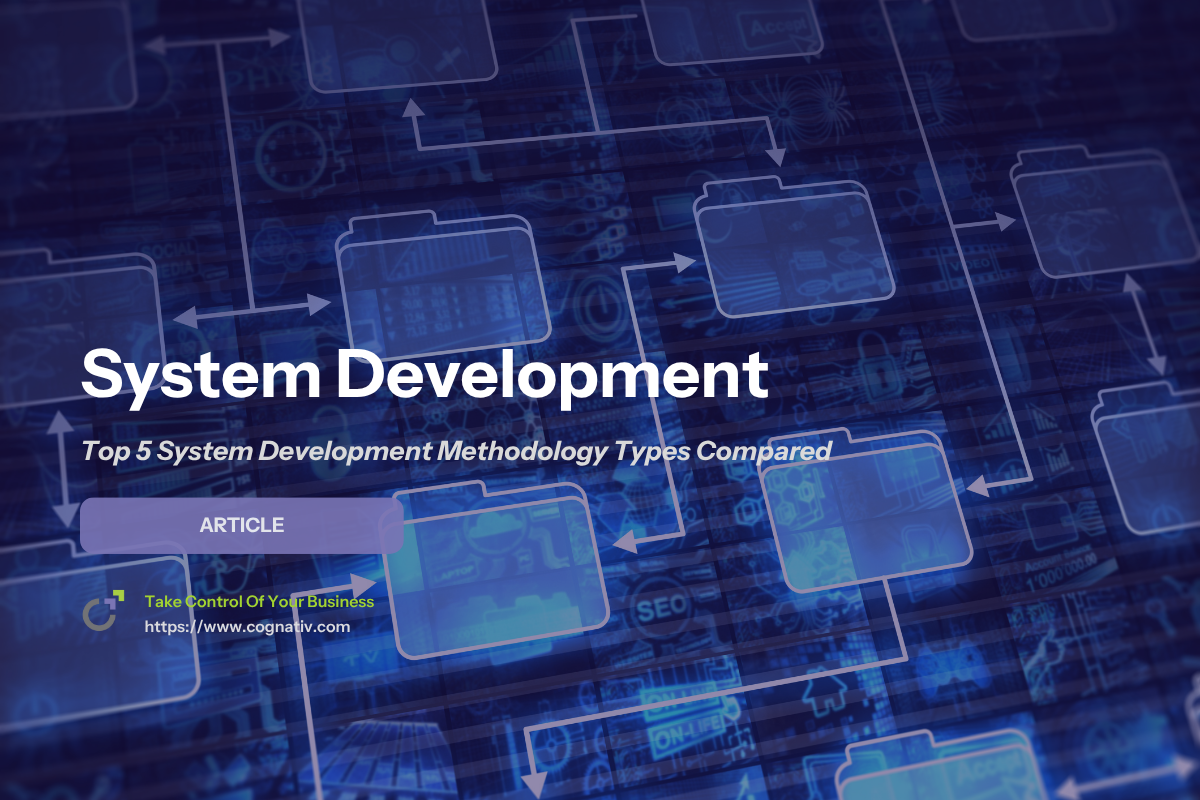Top 5 System Development Methodology Types Compared
Wondering how to manage your software projects efficiently? System development methodology offers structured processes to guide development. This article will help you understand and compare the top five methodologies, ensuring you make the best choice for your project needs.
Key Takeaways
-
System development methodologies are structured processes that enhance team efficiency and project alignment with business goals, significantly impacting project success.
-
Traditional models like Waterfall benefit projects with stable requirements, while Agile methodologies, such as Scrum and Kanban, offer flexibility to adapt to changing needs and emphasize collaboration.
-
Choosing the right methodology involves assessing project requirements, team capabilities, and organizational objectives, with a focus on integrating best practices to navigate challenges and ensure successful software development.
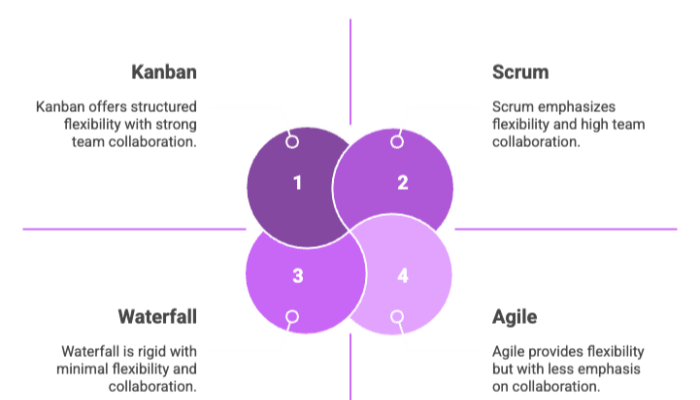

Understanding System Development Methodology
System development methodology refers to structured processes for working on software projects aimed at achieving specific goals. These methodologies are crucial as they improve team efficiency, streamline processes, and enhance alignment with business goals. A well-defined methodology boosts the chances of meeting project requirements and satisfying stakeholders.
The systematic approach of a software development methodology helps in effective decision-making and management of resources. The software development life cycle (SDLC) is a structured method that helps teams plan and manage the creation of high-quality software. The software development lifecycle emphasizes systematic management, ensuring that each phase of development includes specific deliverables and activities.
In the 1960s, as projects grew more complex, system development methodologies began to emerge to provide structured approaches.
Over time, these methodologies have evolved to address the growing demands of software engineering, providing frameworks that guide development teams through various stages of the software development process, including:
-
Systems analysis
-
Design
-
Implementation
-
Testing
Grasping these methodologies helps navigate the complexities of modern software development. Whether you are dealing with feature-driven development, behavior-driven development, or other structured approaches, knowing the right software development methodology and technical skills can significantly impact the project’s success and overall efficiency.
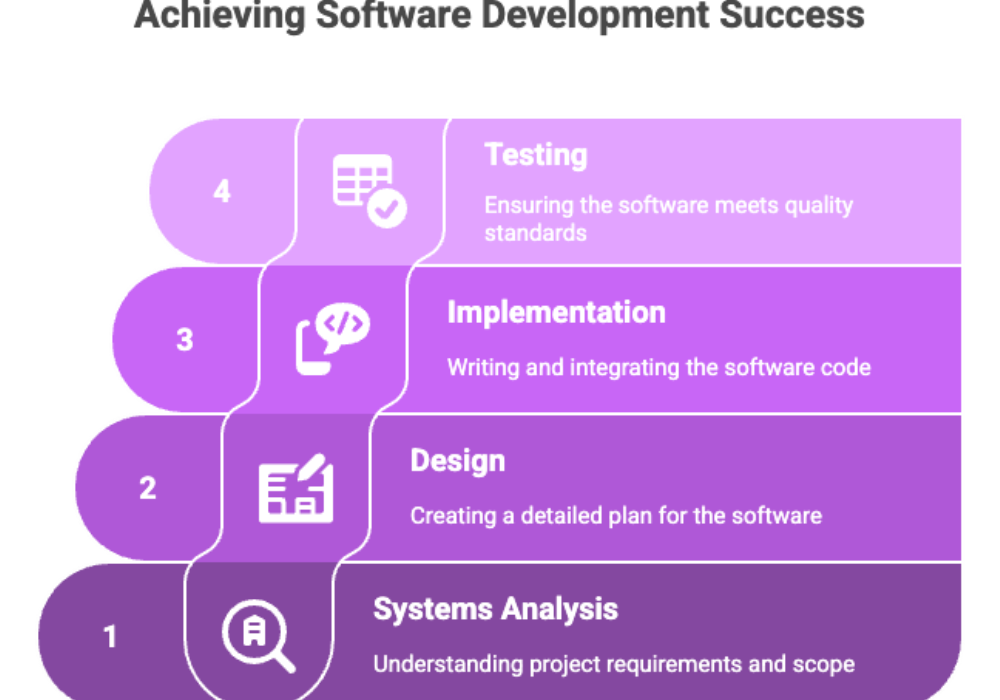

Waterfall Model: A Traditional Approach
The Waterfall Model is one of the traditional software development methodologies characterized by a linear and sequential approach, often referred to as the waterfall development methodology.
It involves distinct phases such as:
-
Requirements
-
Design phase
-
Implementation
-
Verification
-
Maintenance
Each of these phases must be completed before moving on to the next. This clear structure makes it easy for teams to manage and understand the development phase and the development process.
The Waterfall methodology works best for projects that have well-defined objectives. It is also ideal for projects with stable requirements. However, a key disadvantage is its rigidity, as it discourages revisiting and revising any prior phase once complete. This can be problematic for projects where requirements might evolve during development, making the Waterfall Model less suitable for such scenarios.
Despite its limitations, the Waterfall Model has its advantages. Its structured approach ensures that each stage is thoroughly completed before moving forward, which can be beneficial for projects with well-defined requirements and minimal changes. However, its slow pace and high costs are significant drawbacks, especially in dynamic environments where flexibility is crucial.
Knowing the strengths and weaknesses of the Waterfall Model aids in determining its suitability for your project. While it may not be the best fit for every situation, it remains a valuable methodology for projects with clear and unchanging requirements.
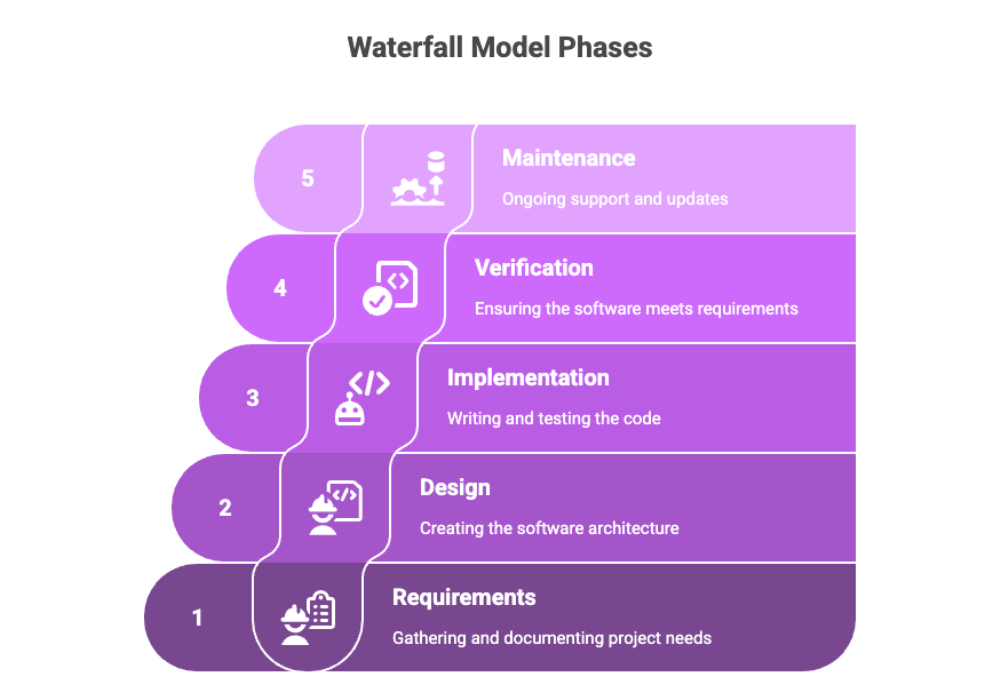

Agile Methodologies: Flexibility and Speed
Agile project management emphasizes iterative delivery, allowing for adaptability and ongoing value generation throughout the project. Agile Software Development (ASD) is particularly suitable for projects with frequently changing requirements, making iterative approaches essential. The nature of the Agile model is inherently iterative, allowing teams to develop in cycles and incorporate feedback.
Agile methodologies prioritize flexibility, rapidly adapting to changes in project scope based on evolving requirements. One of Agile’s key principles is promptly addressing changing requirements, even late in the development process. This adaptability is complemented by close cooperation between the development team and end users, enhancing collaboration and ensuring the final product meets user needs. Agile focuses on these essential aspects to ensure success.
Agile practices offer benefits like rapid software delivery and high quality that aligns with users’ expectations. Iterative releases allow for early defect identification and quicker user feedback, enhancing overall project quality. Promoting team self-organization also helps in achieving the anticipated benefits of Agile methodologies.
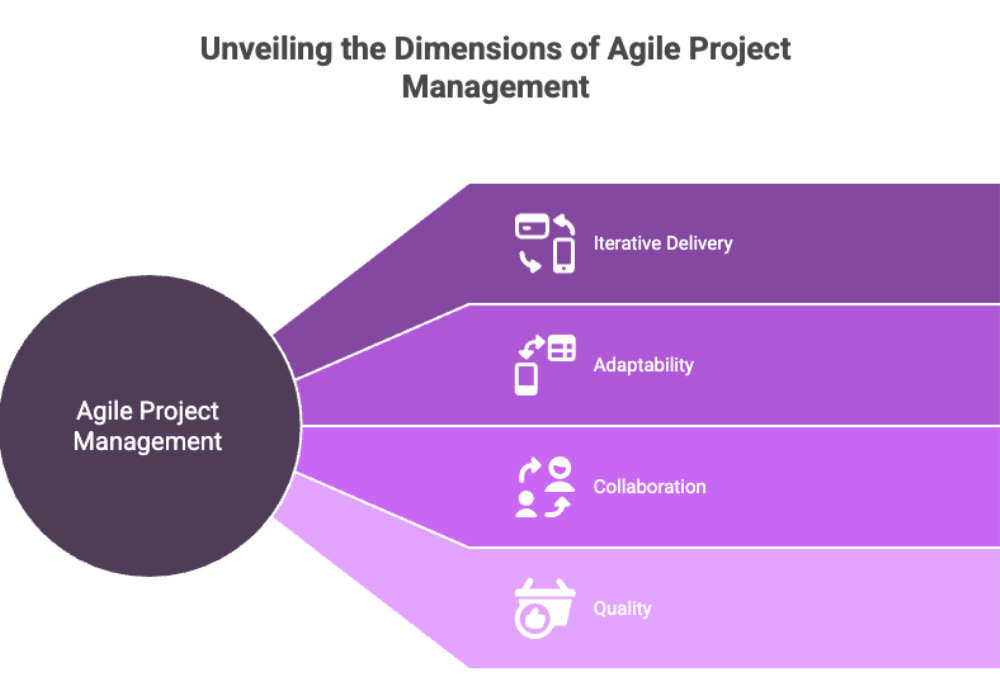

Scrum Framework
Scrum works well for projects with unclear requirements needing ongoing adjustments and flexibility. The Scrum framework focuses on collaboration, accountability, and iterative progress. Key roles in Scrum include the Product Owner, Scrum Master, and Development Team, each playing a crucial part in the project’s success.
Scrum uses short development cycles called sprints, which last up to 4 weeks. Scrum ceremonies, like Sprint planning, daily stand-ups, Sprint reviews, and Retrospectives, are integral to maintaining focus and direction. Agile teams that adhere to all Scrum ceremonies demonstrate significantly better quality. In contrast, teams that skip Sprint planning see a decline in performance.
Scrum promotes a fully committed and experienced team for effective implementation. This dedication ensures that projects remain on track and adaptable to changes, making Scrum a powerful tool in the Agile toolkit.
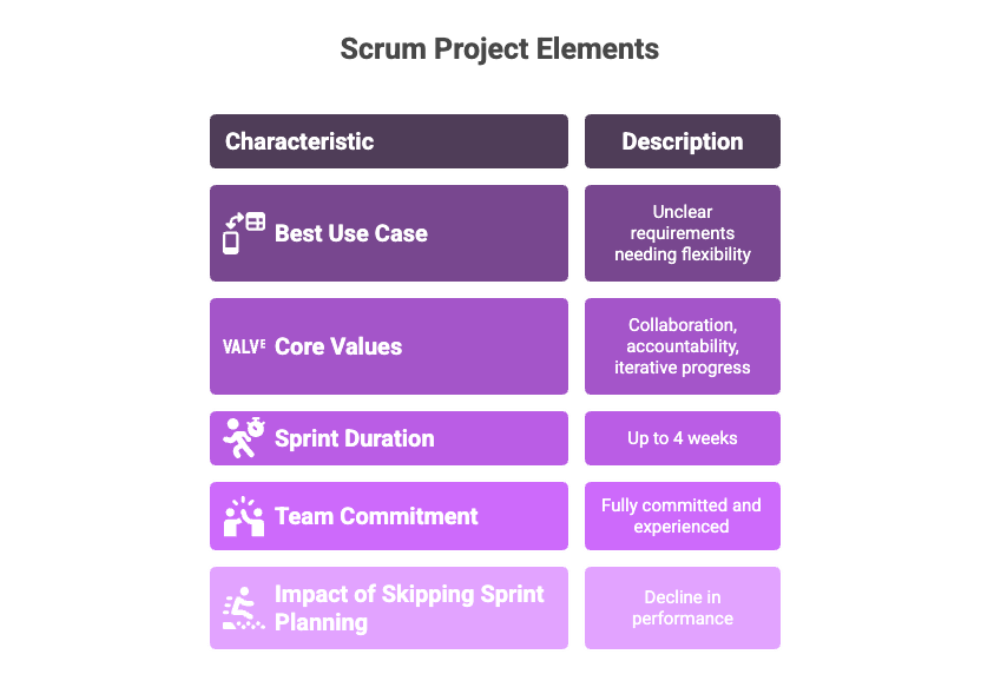

Kanban Method
Kanban emphasizes visualizing work processes to enhance efficiency and facilitate continuous delivery. This project management technique emphasizes transparency and optimized workflows, making it easier to detect blockers and reprioritize tasks. The growing popularity of Kanban is evident, with 86% of respondents expecting to expand their Kanban initiatives next year.
Kanban helps manage projects by visualizing activities on a board, enabling the detection of blockers and task reprioritization. It is suitable for projects with a steady flow of tasks, providing a structured approach to managing work.
The Kanban method’s emphasis on continuous delivery and continuous feedback makes it a valuable approach for maintaining high efficiency and adaptability in project management.
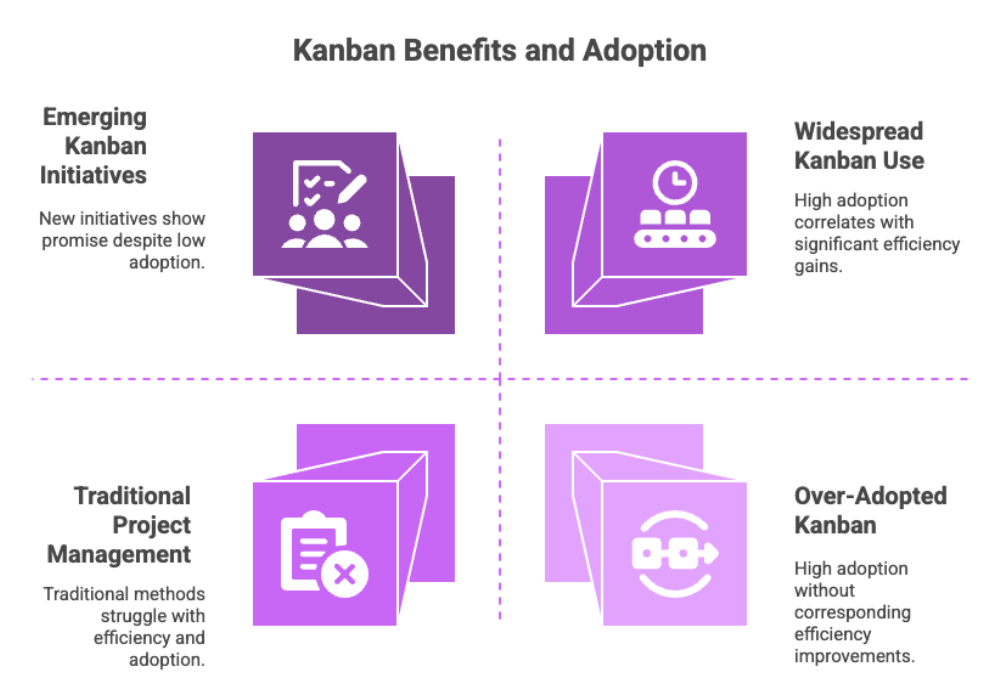

Rapid Application Development (RAD): Quick Prototyping
Rapid Application Development (RAD) emphasizes quick prototyping and user feedback to enhance software development efficiency. The RAD process comprises four main stages: requirement definition, prototype creation, construction, and deployment, following the rational unified process. Specifically, the phases of RAD are requirement planning, user design, construction, and cutover.
RAD’s main advantage is its low investment costs and quick adjustments to evolving requirements. RAD allows for quick product development in a shorter time frame without sacrificing quality. In RAD, prototypes are built rapidly to showcase core functionalities and gather user feedback for refinement.
Testing the prototype is vital for evaluating its functionality and making necessary adjustments based on customer feedback. User feedback gathered during testing phases continuously refines the prototype. Successful RAD final implementation typically requires a stable team of highly skilled developers and engaged users to gather feedback for effective communication.
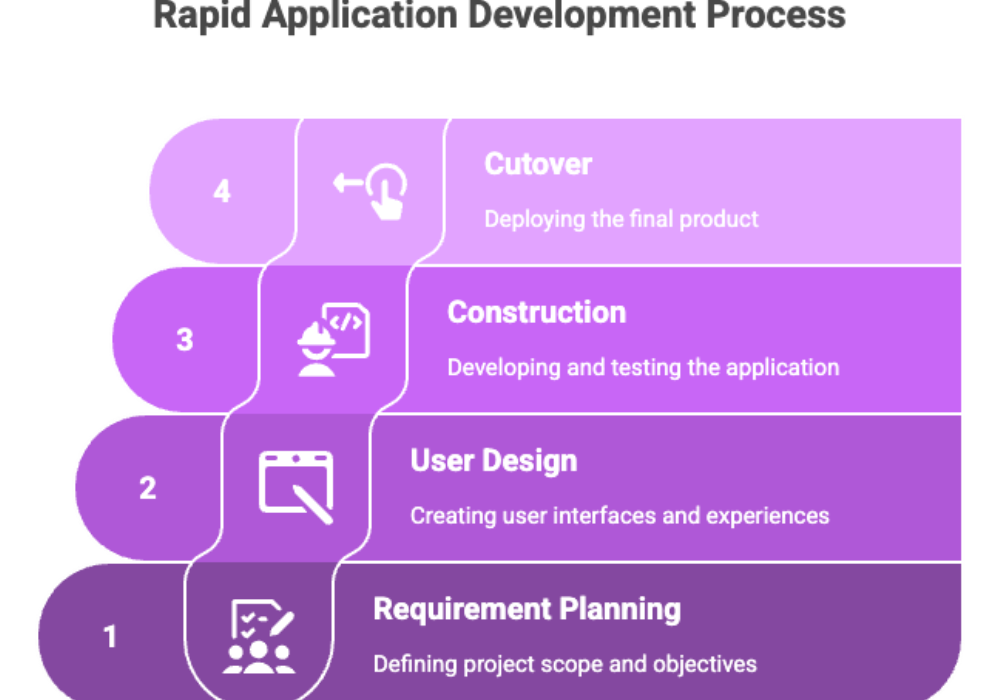

DevOps: Bridging Development and Operations
DevOps is a set of practices aimed at enhancing collaboration between development and operations teams. The primary focus of DevOps is to improve time to market and enhance collaboration. DevOps methodology aims to enhance efficiency by uniting development and operations teams throughout the software lifecycle.
The DevOps lifecycle includes planning, coding, building, testing, integrating, deploying, operating, and monitoring applications. Continuous Integration (CI) helps improve code quality by allowing developers to integrate code changes frequently. DevOps emphasizes automation to streamline repetitive tasks, leading to reduced errors and increased consistency.
DevOps adoption can enhance customer satisfaction through faster software updates and feature delivery. The rise of DevOps was influenced by the need for rapid software delivery and better collaboration to meet business demands.
DevSecOps integrates security into the DevOps workflow, making security a shared responsibility.
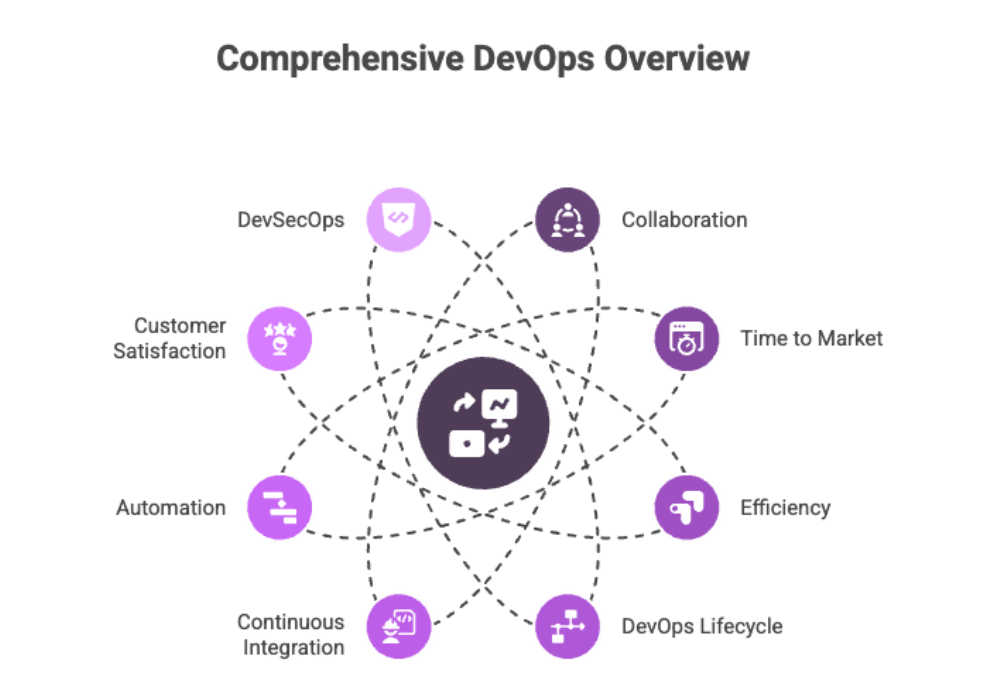

Hybrid Models: Combining Strengths
Hybrid models combine two or more traditional software development approaches to create a tailored solution. Organizations may choose a hybrid model when they find that no single methodology can adequately address their project needs. A hybrid model can boost customer involvement by integrating feedback at various development stages.
A successful hybrid model often involves both an iterative model and incremental development strategies. Various SDLC models can optimize the development cycle by arranging phases in different sequences and methodologies. The hybrid model is particularly effective in accommodating evolving customer requirements throughout the development process.
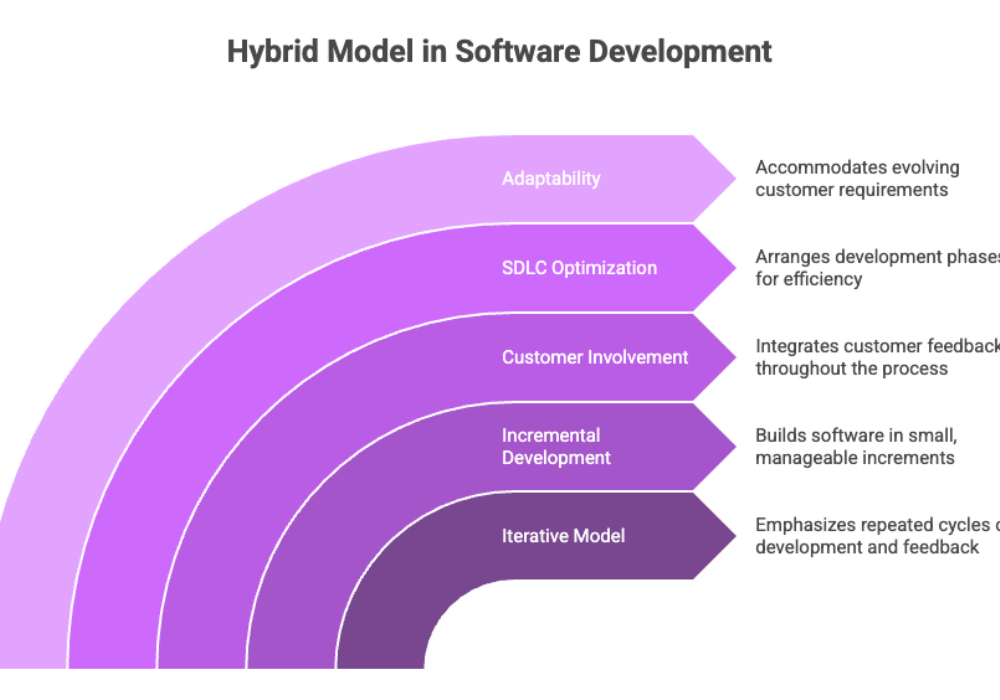

Choosing the Right System Development Methodology
Choosing the right system development methodology requires considering project requirements, team capabilities, and organizational objectives. The Waterfall model is best suited for projects with well-defined requirements and clearly defined scope, where changes are minimal.
Agile methodologies, such as Scrum, are suitable for projects with vague requirements that need frequent adaptations, emphasizing customer satisfaction through early software delivery. Agile frameworks and hybrid models combine elements of traditional and agile methodologies to create a tailored approach that meets specific project needs and constraints.
Knowing the specific needs of your project and team is crucial for making an informed choice. Whether you opt for a traditional approach like Waterfall, a flexible framework like Agile, or a combination of methodologies, the right choice among the most agile frameworks can significantly impact your project’s success.
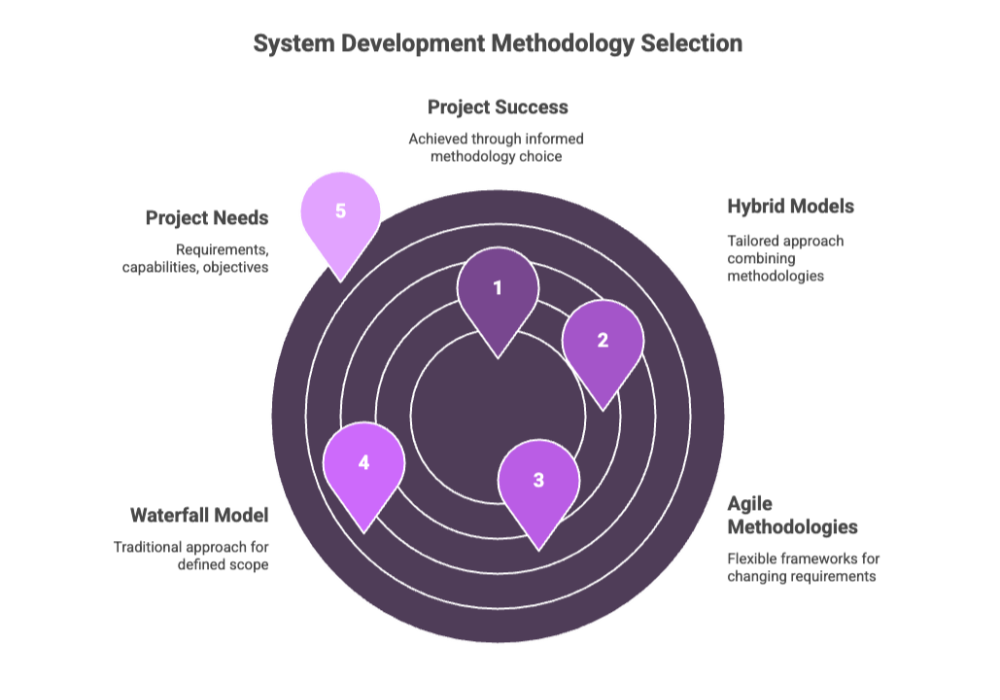

Key Challenges in System Development
System development is fraught with challenges that can complicate the process and potentially derail projects. Changing requirements pose a significant challenge, increasing project complexity and potentially causing misalignment with intended outcomes. This challenge is particularly pronounced in dynamic environments where stakeholder needs and market conditions rapidly evolve.
Stakeholder involvement is crucial to keep the project on track and address needs and concerns. Lack of active stakeholder engagement can lead to scope creep and miscommunication. Additionally, the absence of a well-defined project infrastructure can hinder timely and budget-friendly project delivery.
Navigating these challenges requires effective project management and resource allocation by project managers. Lack of focus and poor management can lead to inefficiencies and hinder complex projects’ success. A thorough project plan that includes user acceptance testing and integration testing in realistic environments is necessary to accurately assess how users will interact with the software in real-world scenarios during the testing phase, ensuring alignment with the project’s goals.
Integration of various applications and technologies can introduce complexity, leading to potential project delays and increased costs. Security challenges also arise in system development, necessitating proper measures to ensure data protection. Addressing these challenges requires a proactive approach and a well-structured development process and development processes.
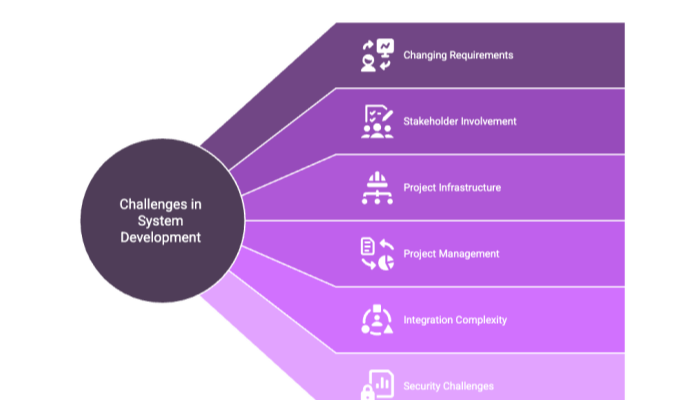

Best Practices for Successful System Development
Establishing clear development requirements is crucial for guiding the team toward project goals. Detailed documentation, regular communication, thorough testing, and continuous improvement are best practices for successful system development. These practices help in maintaining focus and ensuring that all team members are aligned with the project’s objectives.
Continuous improvement encourages frequent review and refinement within the system development life cycle. Implementing best practices significantly increases the likelihood of project success. Establishing a robust quality assurance process is essential to ensure that the software product meets higher software quality standards and reduces errors through rigorous testing.
Minimizing risks and ensuring security are critical components of a successful risk management development process. The company emphasizes security-first engineering practices that align with standards like ISO 27001, SOC 2, and HIPAA. Aligning development efforts with user needs and business outcomes is vital for creating software that delivers real-world impact.
By adhering to these best practices, project teams can navigate the complexities of system development more effectively and deliver high-quality software products that meet or exceed stakeholder expectations through team collaboration using a software development approach.
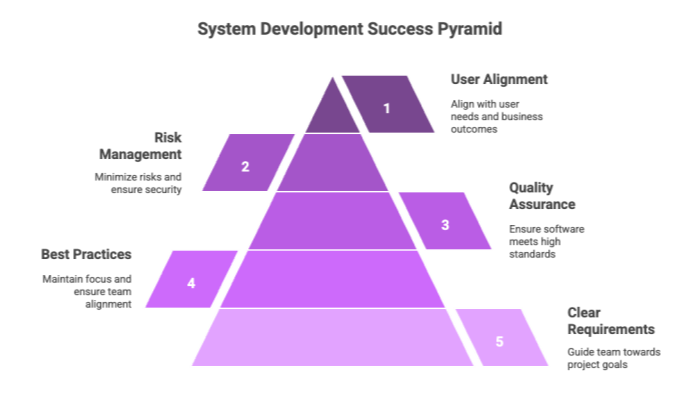

Summary
In the ever-evolving field of software development, the choice of methodology can significantly influence the success of a project. From the structured and linear Waterfall Model to the flexible and adaptive Agile methodologies, each approach has its unique strengths and challenges. Rapid Application Development (RAD) emphasizes quick prototyping and user feedback, while DevOps bridges the gap between development and operations for continuous delivery. Hybrid models combine elements of multiple methodologies to create tailored solutions that meet specific project needs.
Choosing the right system development methodology involves understanding the project’s requirements, the team’s capabilities, and the organization’s objectives. By considering these factors and adhering to best practices, development teams can navigate common challenges and deliver high-quality software that aligns with user needs and business outcomes. The journey of system development is complex, but with the right approach, it can lead to successful and impactful software solutions.

Frequently Asked Questions
System development methodologies can sometimes be complex to understand and choose from. To help clarify common doubts, here are answers to some frequently asked questions about popular system development approaches.
These insights cover the main phases of the Waterfall Model, how Agile adapts to changing requirements through iterative development, the key benefits of Rapid Application Development (RAD) including rapid prototyping and user feedback, and the role of DevOps in enhancing collaboration between development and operations teams via automation and continuous integration.
Additionally, we explain when hybrid models are beneficial, combining strengths from multiple methodologies to better address unique project needs and constraints. Understanding these fundamentals can guide teams and organizations in selecting the right system development methodology for their specific goals.
What are the main phases of the Waterfall Model?
The main phases of the Waterfall Model include requirements, design, implementation, verification, and maintenance. Each phase must be completed before moving on to the next, ensuring a structured approach to software development.
How does Agile methodology adapt to changing requirements?
Agile methodology effectively adapts to changing requirements by employing iterative delivery and fostering close collaboration between the development team and end users. This flexibility allows for continuous feedback and adjustments throughout the project lifecycle.
What is the primary benefit of Rapid Application Development (RAD)?
The primary benefit of Rapid Application Development (RAD) is its capacity to deliver products swiftly and effectively by leveraging rapid prototyping and incorporating user feedback. This approach enhances overall development efficiency and responsiveness to user needs.
How does DevOps enhance collaboration between development and operations teams?
DevOps enhances collaboration by fostering a culture of shared responsibility and implementing practices like Continuous Integration (CI) and automation. This integration significantly improves communication and efficiency between development and operations teams.
When should organizations consider using a hybrid model?
Organizations should consider using a hybrid model when a single methodology fails to meet their project needs and constraints, enabling them to leverage the advantages of various approaches. This flexibility can enhance project outcomes significantly.
